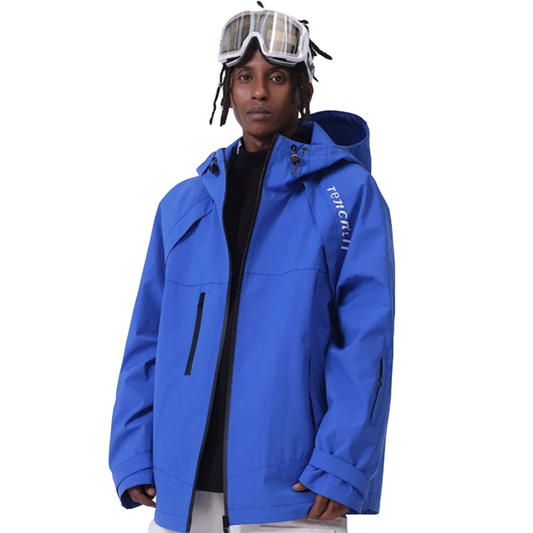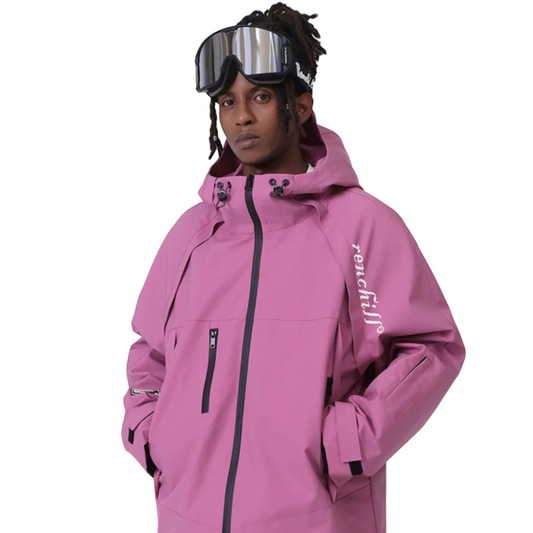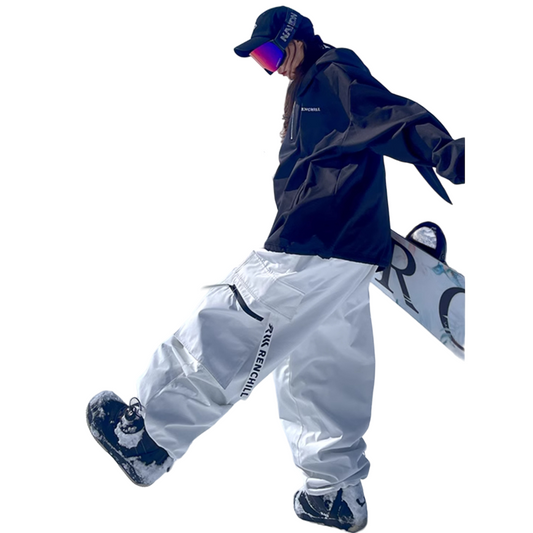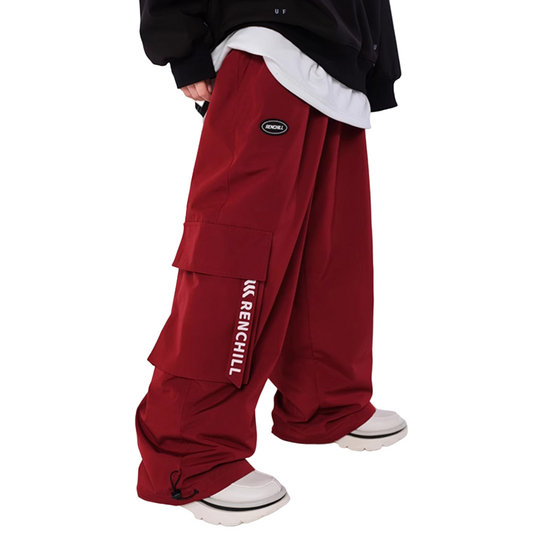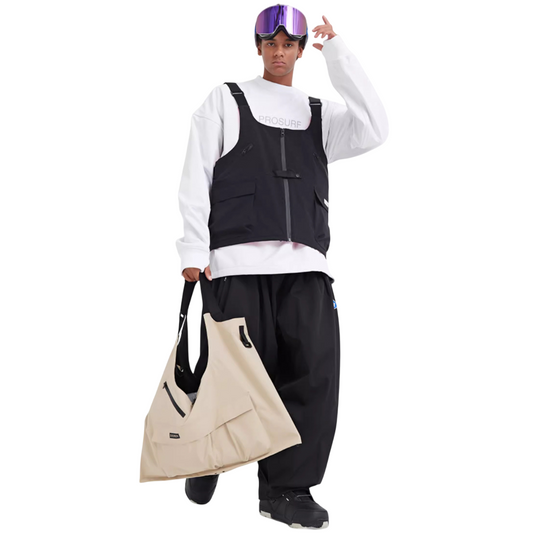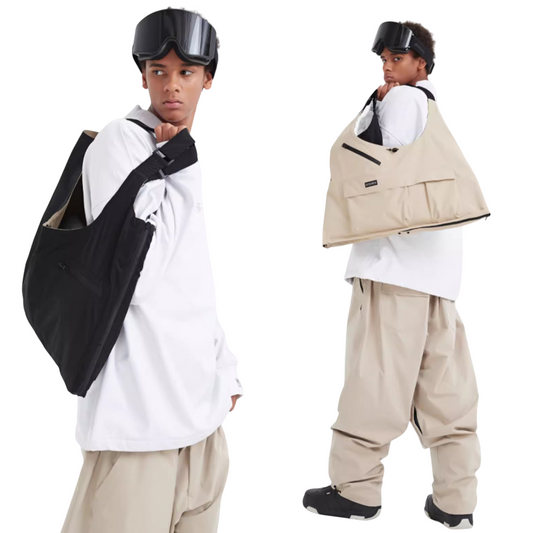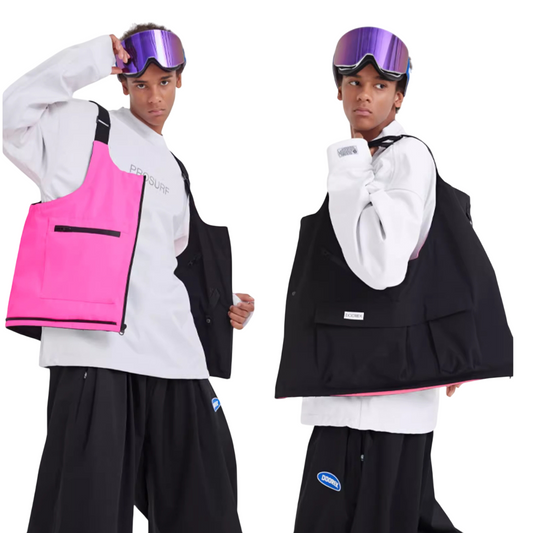When you ask what to wear for spring skiing, you should start with lightweight snow gear. Choose moisture-wicking base layers made from merino wool or synthetic fabrics like polyester. These materials keep you dry and comfortable during ski runs in spring. Layer with breathable midlayers to help regulate your body temperature when conditions change. Wear versatile, weatherproof outerwear to protect yourself from wind and wet snow. For sun protection, use sunscreen and polarized eyewear. Add mid-weight gloves and hats to complete your outfit. The SNOWMOCACA Snow Suit offers style and function for spring ski days, and you can enjoy FREE SHIPPING on all orders over $99. 🏂
Key Takeaways
- Dress in layers, starting with moisture-wicking base layers made of merino wool or synthetic fabrics to stay dry and comfortable.
- Choose breathable, waterproof outerwear with adjustable vents to protect against wind and wet snow while preventing overheating.
- Use proper sun protection like sunscreen with SPF 30+, polarized goggles or sunglasses, and lip balm to guard against strong UV rays.
- Pick mid-weight gloves, hats, and wool socks that balance warmth and breathability for changing spring conditions.
- Adjust your layers throughout the day and stay hydrated to enjoy spring skiing safely and comfortably.
Spring Skiing Conditions
Weather Changes
Spring skiing brings a big shift in weather compared to the colder winter months. At popular resorts like Breckenridge, you see temperatures rise from around 40°F in March to even warmer days in April and May. These conditions often feel perfect for t-shirt skiing, especially when the sun shines and the air feels mild. You notice fewer crowds and longer daylight hours, which makes your ski days more relaxed. The weather can still surprise you with a late-season snowstorm, but most days feel warmer and more comfortable. Lower slopes soften quickly in the afternoon, while higher elevations keep firmer snow for longer. South-facing runs get the most sun and warm up first, so you might want to plan your ski route based on the time of day.
Snow Types
You encounter many types of snow during spring skiing. The most common is corn snow, which forms after repeated freeze and melt cycles. This snow feels smooth and easy to ski on, making it a favorite for many. Slush appears as the day warms up, creating wet and heavy snow that slows you down and requires more effort. Sometimes, you find patches of ice in the morning after a cold night. These spots can be slick and challenging. On rare days, a fresh snowfall brings powder, but it usually does not last long in spring. Other types, like mashed potatoes or cement snow, also show up, each changing how you ski and how much control you have.
Tip: Adjust your ski technique and equipment to match the changing snow. Softer snow needs wider skis for better float, while icy patches require sharp edges for grip.
Layering Importance
Layering plays a key role in keeping you comfortable and safe during spring skiing. Scientific studies show that using baselayers, midlayers, and outerwear helps your body manage heat and moisture. Baselayers made from merino wool or synthetic fibers wick sweat away from your skin and dry quickly. This keeps you warm without feeling clammy. Midlayers add or remove warmth as needed, while outerwear blocks wind and wet snow but still lets your body breathe. This basic layering system prevents you from overheating or getting chilled as the weather changes. A good layering guide helps you pick the right clothes for every part of your ski day.
|
Layer Type |
Function |
Best Materials |
|---|---|---|
|
Baselayers |
Moisture wicking, temperature control |
Merino wool, synthetics |
|
Midlayers |
Insulation, adjustable warmth |
Fleece, light down |
|
Outerwear |
Wind and water protection |
Breathable shells |
You can enjoy spring skiing more when you follow a basic layering approach. This lets you stay dry, warm, and ready for any weather or snow you find on the mountain.
SNOWMOCACA Snow Suit & Outfit for Skiing
Features for Spring
You need ski gear that adapts to changing spring conditions. The SNOWMOCACA Snow Suit gives you technical advantages for every ski run. You stay dry with a bonded membrane and a 10,000 mm waterproof rating. The PFAS-free DWR coating and taped seams block moisture, even in slushy snow. You feel comfortable because the suit breathes well, with a 10,000 g breathability rating and under-arm mesh vents. Adjustable cuffs and elastic hems let you control warmth and airflow. Stretch panels, including plus sizes, help you move freely on the slopes.
|
Feature Category |
Key Technical Attributes |
|---|---|
|
Waterproofing |
Bonded membrane with 10,000 mm waterproof rating, PFAS-free DWR coating, taped seams to prevent moisture ingress |
|
Breathability |
10,000 g breathability rating, under-arm mesh vents to release sweat and prevent overheating |
|
Fit & Comfort |
Adjustable cuffs, elastic hems, stretch panels, including plus sizes, for a flexible fit and movement |
Style Options
You find many outfit choices for spring skiing. SNOWMOCACA offers a two-piece ski suit, snow suit set, and plus-size options. You can pick a men's or women's ski jacket and ski pants for a custom fit. Convertible zip-off pants and jackets let you add or remove layers as the weather changes. Baggy and flexible ski pants give you freedom of movement and airflow. You can match your ski jacket with boots for a stylish look on the mountain.
Tip: Choose quick-drying fabrics and breathable layers for your outfit. You stay comfortable during warm afternoons and cool mornings.
Why Choose SNOWMOCACA
You want an outfit for skiing that works in every condition. SNOWMOCACA supports layering with a moisture-wicking base and mid-layers. You adjust cuffs, hems, and vents to fine-tune your comfort. Breathable, quick-drying fabrics keep you cool when the snow gets wet. The suit fits well with boots and other ski gear, making it easy to move and enjoy your day.
Promotions & Shopping Tips
You save money with FREE SHIPPING on all orders over $99. You can shop for your favorite ski jacket, ski pants, and boots without extra cost. SNOWMOCACA offers many outfit options for every skier. For more tips on choosing the best outfit for skiing, visit the SNOWMOCACA blog.
What to Wear Spring Skiing: Layer by Layer

Choosing what to wear spring skiing means building your outfit from the inside out. Each layer plays a role in keeping you comfortable, dry, and ready for changing mountain weather. Here’s how to break down your ski outfit for spring conditions.
Base Layers
Start with base layers that sit next to your skin. These pieces manage sweat and help regulate your temperature. Merino wool and synthetic fabrics like polyester or bamboo work best. They pull moisture away from your skin, keeping you dry and warm. This prevents heat loss and backchills, which can happen if sweat stays on your skin. Baselayers with a snug fit and seamless design reduce chafing and discomfort during long ski days. Lighter weights suit spring skiing because they balance warmth and breathability.
- Moisture-wicking base layers keep you dry and prevent chills.
- Merino wool and bamboo offer natural odor resistance and comfort.
- Choose a close fit for better moisture control and insulation.
Tip: Avoid cotton for base layers. Cotton holds moisture and loses insulation, making you cold and uncomfortable.
Midlayers
Midlayers provide insulation between your base layers and outerwear. For spring skiing, you want warmth without overheating. Lightweight or midweight fleece, synthetic puffies, or wool blends work well. These materials trap heat but let moisture and excess warmth escape. Breathable midlayers help you stay warm when you stop and prevent overheating when you ski hard. Zippered midlayers give you easy temperature control as the day warms up.
- Fleece midlayers offer stretch, quick drying, and breathability.
- Synthetic insulated jackets add warmth but avoid heavy down, which can overheat you.
- Wool blends balance insulation and moisture management.
Note: The “be bold, start cold” principle helps you avoid overheating. Begin with lighter insulation and add layers if needed.
Outerwear
Your outerwear protects you from wind, wet snow, and changing spring weather. A good ski jacket and ski pants should be waterproof and breathable. Look for features like GORE-TEX membranes, pit zips for ventilation, and adjustable hoods that fit over helmets. Hardshell jackets give you the best waterproof and windproof protection. Softshell jackets offer more breathability and flexibility for drier days. Choose outerwear with taped seams, multiple pockets, and easy-to-adjust cuffs and hems.
|
Outerwear Feature |
Benefit for Spring Skiing |
|---|---|
|
Waterproof Shells |
Keep you dry in slush and wet snow |
|
Breathability |
Prevent overheating; pit zips help release heat |
|
Adjustable Hoods |
Fit over helmets for extra protection |
|
Multiple Pockets |
Store essentials like phone, pass, and snacks |
|
Care & Maintenance |
Wash with products like Nikwax to keep waterproofing effective |
Tip: Proper care extends the life of your ski jacket and ski pants. Always dry them thoroughly after each use.
Pants
Ski pants for spring skiing need to balance breathability, waterproofing, and flexibility. Shell pants work best because they are uninsulated and let you adjust warmth with your baselayers. Look for pants with 3-layer construction, which combines an outer shell, a waterproof membrane, and an inner liner. Hardshell ski pants offer top weather protection and durability, while softshell pants provide more breathability and freedom of movement for active skiing. Gore-Tex and DWR coatings keep you dry in wet conditions. Bibs give extra coverage but can feel bulky, so many skiers prefer regular pants for easier movement.
- Shell ski pants let you customize warmth and stay cool.
- Hardshell pants protect against wet snow and wind.
- Softshell pants suit dry, mild spring days with high activity.
Note: Insulated pants may cause overheating in spring. Stick with shells and adjust your base layers for comfort.
Socks & Gloves
Ski-specific socks and gloves make a big difference in comfort and performance. Choose socks made from merino wool blends for moisture-wicking, warmth, and softness. Look for features like shin padding, compression fit, and proper height to prevent blisters and irritation. Lightweight or ultralight socks work well for spring skiing, giving you better boot contact and breathability.
For gloves, pick mid-weight, waterproof options that keep your hands dry but not too hot. Breathable gloves with moisture-wicking liners help manage sweat during warm afternoons. Avoid bulky gloves, which can cause your hands to overheat.
|
Feature |
Benefit for Spring Skiing |
|---|---|
|
Moisture-Wicking |
Keeps feet and hands dry, prevents blisters and cold |
|
Shin Padding |
Reduces discomfort from ski boots |
|
Compression Fit |
Improves blood flow and reduces fatigue |
|
Proper Sizing |
Prevents bunching and hot spots |
|
Lightweight |
Enhances boot feel and breathability |
Tip: Bring a spare pair of socks in your pack. Wet feet can ruin your day on the slopes.
When you know what to wear spring skiing, you can build an outfit that keeps you comfortable, dry, and ready for every run. Focus on the right layers, materials, and features for your ski jacket, ski pants, and accessories. This approach helps you enjoy spring skiing to the fullest.
Accessories & Sun Protection for Spring Skiing

Spring skiing brings strong sun, changing weather, and plenty of fun. You need the right accessories to stay safe and comfortable on the slopes.
Eyewear
Protecting your eyes is essential during spring skiing. Snow reflects up to 90% of sunlight, which increases the risk of eye damage. You should wear goggles or sunglasses with 100% UV protection and polarized lenses. Polarized eyewear reduces glare and improves visibility on bright snow. Quality lenses help prevent snow blindness and other vision problems. Choose trusted brands and check for scratches, since damaged coatings can reduce UV protection.
Tip: Goggles with ventilation keep your face cool and prevent fogging during warm afternoons.
Sunscreen & Skin Care
High altitudes and reflective snow make UV rays stronger in spring. Dermatologists recommend using sunscreen with SPF 30 or higher. SPF 30 blocks about 97% of UV rays, while SPF 50 offers even more protection. Apply sunscreen to your face, neck, and lips before you head out. Reapply every two hours, especially after sweating or wiping your face. Lip balm with SPF keeps your lips safe from sunburn and windburn.
- Use broad-spectrum sunscreen with SPF 30 or higher.
- Reapply often for best protection.
- Cover exposed skin with a neck gaiter or Buff.
Hats & Headbands
You need head protection for both safety and comfort. Helmets protect your head from impacts and offer adjustable ventilation. Many skiers use lightweight hats or headbands under their helmets for extra warmth. Choose moisture-wicking materials to keep sweat away. Neck gaiters and balaclavas shield your skin from wind and sun, reducing the risk of frostbite and sunburn.
|
Accessory Type |
Contribution to Safety and Comfort |
|---|---|
|
Helmet |
Protects head from impact; adjustable fit and ventilation improve comfort. |
|
Eyewear (Goggles) |
Shields eyes from UV rays and glare; prevents snow blindness. |
|
Face Protection |
Neck gaiters and balaclavas protect skin from wind and sun. |
|
Hand Protection |
Lightweight gloves keep hands dry and comfortable. |
|
Foot Protection |
Thin, moisture-wicking socks prevent blisters and cold injuries. |
|
Sunscreen & Lip Balm |
Protect skin and lips from UV rays and windburn. |
|
Hand Warmers |
Provide backup warmth on cold days. |
Spring Traditions
Spring skiing is famous for its lively traditions. Resorts host costume parties, pond skims, and outdoor concerts. You see skiers in neon jackets, cowboy hats, and onesies. Pond skims challenge you to cross a pool of water on skis, often in wild outfits. Friendly races and competitions bring the community together. Many resorts extend their season, giving you bonus days to enjoy the mountain.
|
Tradition Type |
Description |
Examples / Notes |
|---|---|---|
|
Costumes and Theme Parties |
Skiers wear outlandish costumes and themed outfits. |
Neon jackets, denim shorts, cowboy hats, onesies. |
|
Contests, Races, Competitions |
End-of-season races and contests with prizes. |
Cardboard boat races, rail jams, snow golf tournaments. |
|
Pond Skims |
Skiers cross a pond in costumes as a signature event. |
A-Basin “Lake Reveal”, worldwide pond skims. |
|
Concerts and Festivals |
Live music events enhance the festive atmosphere. |
DJs, weekend festivals, skiing with entertainment. |
|
Bonus Days and Extensions |
Resorts offer extra skiing days. |
Multi-sport days, longer ski season. |
Note: Join the fun by packing a costume or festive outfit for your spring skiing trip. You will make memories and enjoy the mountain in a new way. 🎉
Packing Tips & Outfit for Skiing Trips
Packing Checklist
You want your ski-trip packing to cover every need, from the slopes to the lodge. Experts recommend organizing your packing by category. This helps you avoid forgetting important items. Use this table to guide your packing for a spring ski adventure:
|
Category |
Frequently Recommended Items |
|---|---|
|
Tech Accessories |
Power banks, charging cords, portable tripod, insulated smartphone case, Bluetooth headphones, GoPro |
|
Ski and Snowboard Clothing |
Waterproof ski jacket and pants, non-cotton base layers, fleece or wool sweaters, gloves, warm hats, wool socks |
|
Ski and Snowboard Gear |
Skis, poles, boots, goggles (with different lenses), helmet, hand and toe warmers, hydration pack |
|
Mountain Casual Wear |
Warm jackets, hats, gloves, sweaters, jeans, waterproof boots, sleepwear |
|
Toiletries |
Toothbrush, toothpaste, deodorant, shampoo, conditioner, sun cream (high factor), lip balm, first aid kit |
|
Travel Documents |
Passports, insurance documents, credit cards, ID, medical insurance cards, prescriptions |
|
Miscellaneous |
Snacks, hand sanitizer, medication, vitamins, books, swimwear, slippers, sunglasses, contact lenses, earplugs |
Tip: Always bring layers. Spring weather changes quickly, so you want to adjust your outfit for skiing throughout the day.
Versatile Pieces
You can save space in your ski-trip packing by choosing versatile pieces. These items work both on the mountain and during après-ski. Many travel experts suggest the following:
- A lightweight shirt jacket, like the Strafe Highlands, keeps you warm on the slopes and looks stylish at dinner.
- Down overalls, such as the Cotopaxi Fuego, provide warmth and function for skiing and relaxing.
- Polarized sunglasses protect your eyes and add style for après-ski.
- A fleece cap offers comfort and warmth for skiing and socializing.
- Cozy boots, like Allbirds Wool Runner-Up Fluffs, keep your feet warm after you take off your ski boots.
You can also pack a cute hat, fluffy socks, a chic jacket, and jeans. These pieces help you transition from skiing to exploring the ski town without changing your whole outfit.
Après-Ski Outfits
After a day on the slopes, you want to relax in comfort and style. Your ski-trip packing should include après-ski outfits that feel cozy and look great. Many skiers swap their ski jackets for a cute sweater or a lightweight jacket. You can change into stylish winter booties or waterproof boots for walking around town. Fluffy socks and non-ski mittens add extra comfort. Sunglasses and a cute hat complete your look for après-ski events or casual dinners.
Note: Choose pieces that layer easily. You stay comfortable indoors and outdoors, no matter how the temperature changes.
A smart packing plan ensures you have the right gear, outfit for skiing, and après-ski essentials. You enjoy your trip more when you pack efficiently and choose items that work for every part of your adventure.
Quick Tips for Spring Skiing Comfort
Adjusting Layers
Spring skiing brings changing temperatures and variable conditions. You need to adjust your layers throughout the day to stay comfortable. Follow these steps to manage your clothing:
-
Start with lighter base layers. These help you avoid overheating as the sun rises.
-
Use a light insulator instead of a heavy coat. You can remove this layer and store it in your packing when the day warms up.
-
Wear a hard shell jacket in the morning for wind protection. As the temperature increases, open zippered vents in your jacket, pants, and helmet to release heat.
-
Choose waterproof spring gloves. These keep your hands dry and prevent sweat buildup.
-
Always pack sunglasses or goggles. These protect your eyes from glare and changing light.
Tip: Keep extra layers in your packing so you can add or remove clothing as needed. This helps you stay comfortable from morning until afternoon.
Hydration
You lose fluids quickly during ski activities, especially at altitude. Sports medicine professionals recommend several hydration strategies to keep you healthy and energized. Use this table to guide your hydration plan:
|
Hydration Strategy Aspect |
Recommendation |
|---|---|
|
Baseline hydration |
Drink half your body weight in ounces of water daily |
|
Altitude adjustment |
Add 1-1.5 liters of water daily at altitude |
|
During skiing (over 90 minutes) |
Drink 3-8 ounces of water every 15 minutes |
|
Electrolytes |
Supplement with 300-500 mg sodium post-activity; 500-700 mg sodium per liter during high-intensity |
|
Post-activity rehydration |
Drink 16-24 ounces of water for every pound of body weight lost |
|
Pre-activity meal |
Eat a meal with a 1:1 or 2:1 carb-to-protein ratio 1-3 hours before skiing |
|
Hydrate to thirst |
Drink when thirsty before training or racing |
Note: Cold weather can make you forget to drink water. Keep a bottle in your packing and sip often, even if you do not feel thirsty.
Safety
Spring skiing requires extra attention to safety. Snow conditions change quickly, and new hazards appear as the snow melts. Use these tips to protect yourself and others:
- Ski with a buddy. Stay within viewing distance so you can help each other if needed.
- Keep ski patrol contact information in your packing. You can call for help quickly in case of an emergency.
- Wear a helmet. This reduces your risk of injury, but always ski within your ability.
- Wax your skis or snowboard. This helps you glide over soft, sun-exposed snow and prevents getting stuck.
- Avoid tree runs. Melting snow exposes rocks and stumps that can damage your boots or cause injury.
- Follow all trail signage and the Responsibility Code. This keeps you and other skiers safe.
- Use gondolas to avoid slushy, obstacle-filled lower slopes.
Tip: Apply sunscreen and SPF lip balm often. Strong sun at altitude can burn your skin quickly during spring skiing.
You can enjoy spring skiing when you focus on lightweight, moisture-wicking layers, weatherproof outerwear, and strong sun protection. Experts recommend:
- Dress in layers with synthetic or merino wool base layers.
- Choose waterproof jackets and pants that allow movement.
- Use breathable features like pit zips.
- Wear wool socks, snug gloves, and a helmet with goggles.
- Carry backup items like glove liners and dry socks.
The SNOWMOCACA Snow Suit gives you style and function for every run. Take advantage of free shipping and find more tips on the SNOWMOCACA blog. Get ready for spring skiing fun! 🎿
FAQ
What base layer works best for spring skiing?
You should choose merino wool or synthetic fabrics. These materials wick moisture and dry quickly. Avoid cotton because it traps sweat and makes you cold. Lightweight options keep you comfortable as temperatures rise.
How do you stay cool during warm afternoons on the slopes?
Open vents on your jacket and pants. Remove a midlayer if you feel hot. Drink water often. Wear lighter gloves and socks. You can also ski early in the day to avoid peak heat.
Do you need waterproof gear for spring skiing?
Yes, waterproof jackets and pants protect you from slush and wet snow. Look for gear with taped seams and breathable membranes. These features keep you dry and help you avoid overheating.
What sun protection do you need for spring skiing?
Apply sunscreen with SPF 30 or higher. Use lip balm with SPF. Wear polarized goggles or sunglasses. Cover exposed skin with a neck gaiter or Buff. Reapply sunscreen every two hours for best results.










